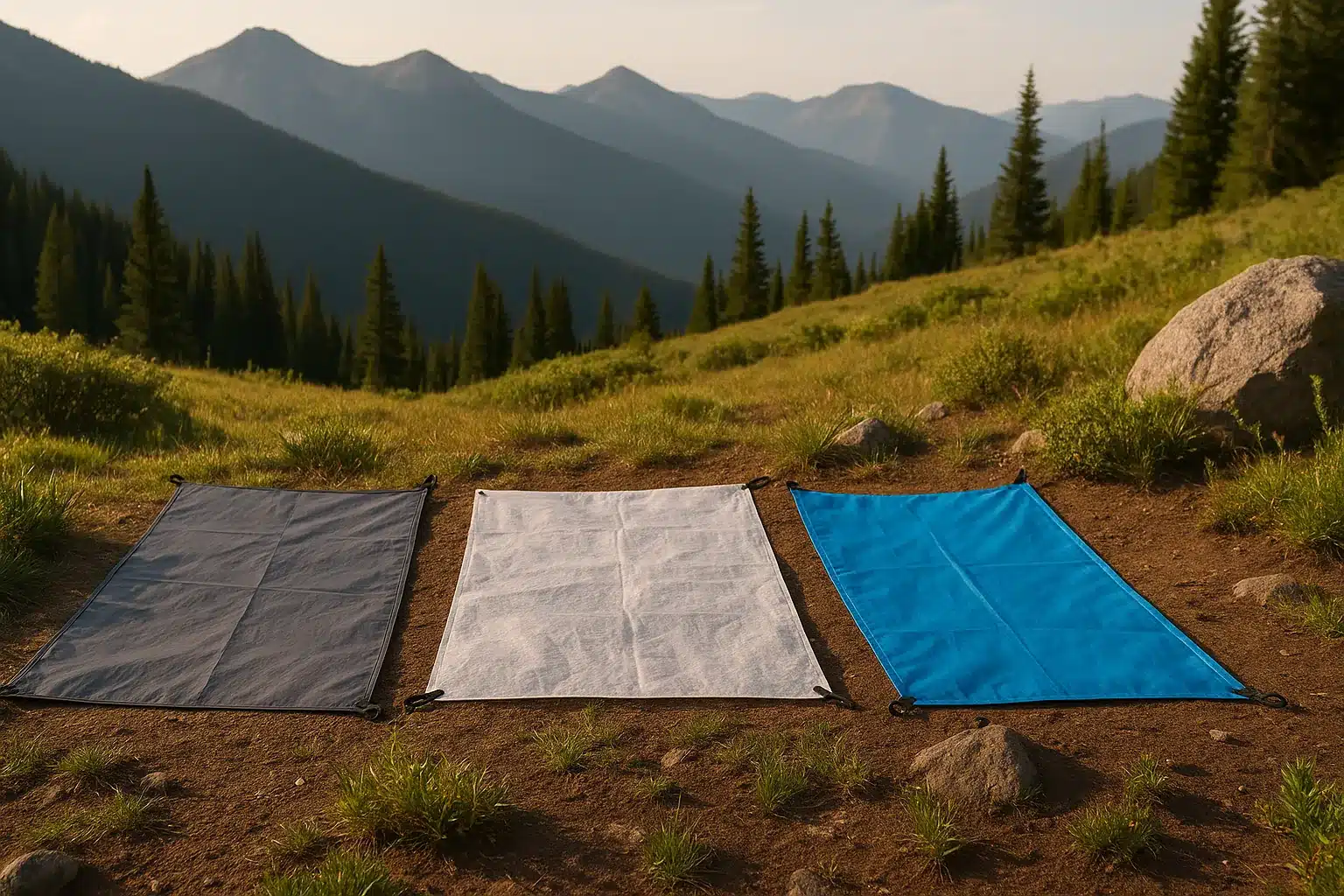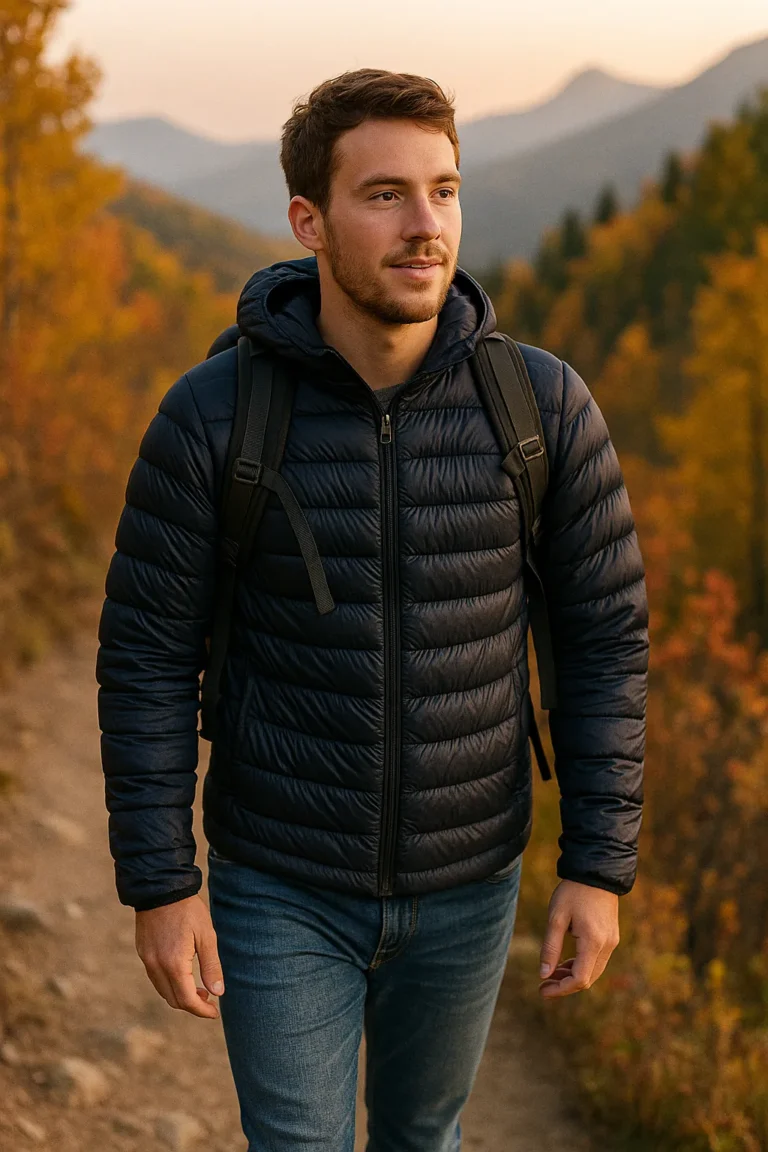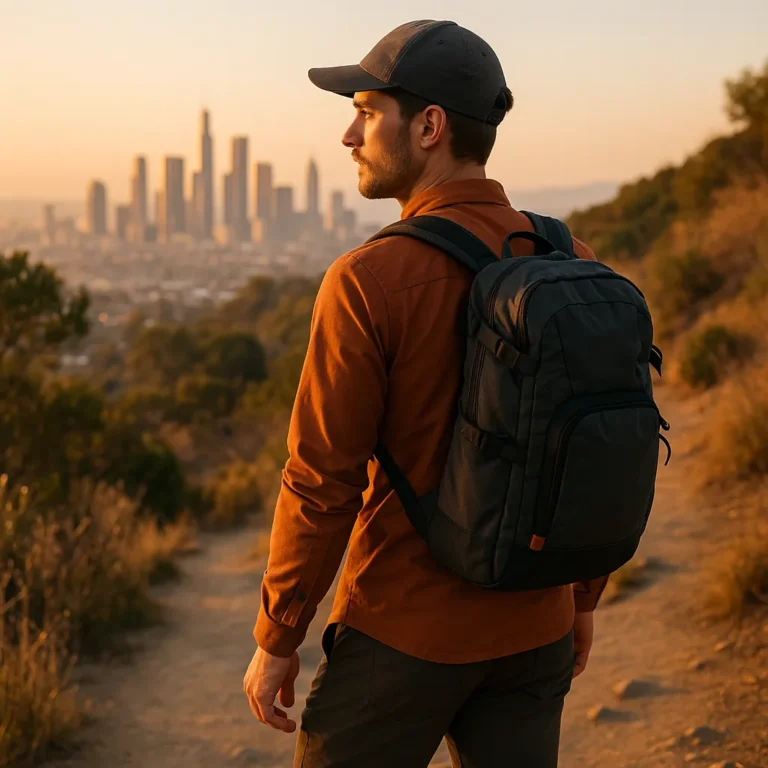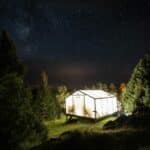Category: Gear | Type: Product Comparison | Focus: Ultralight Backpacking | Time: 8 m
Last updated: April 2025
Introduction:
As a solo hiker, I’ve learned that every ounce counts – but keeping your gear dry and safe is just as crucial for a good night’s sleep. A high-quality ultralight ground sheet can be the difference between a comfortable night under the stars and waking up in wet gear.
Ground sheets — also called footprints or groundcloths — serve as a protective barrier between your sleeping pad or tent and the ground. They prevent moisture seepage, reduce wear and tear, and add an extra layer of insulation without adding significant weight to your pack. For solo campers who prioritize safety and comfort, the right groundsheet is an essential part of your minimalist hiking setup.
In this guide, we’ve curated the top ultralight ground sheets trusted by solo hikers and thru-hikers for 2025. Whether you prefer a minimalist bivy setup or need extra protection under your tent, these options are compact, durable, and trail-tested for lightweight tarp camping and various backpacking scenarios.
Comparing the Best Ultralight Ground Sheets
| Ground Sheet | Material | Weight | Packed Size | Best For | Price Range |
|---|---|---|---|---|---|
| Gossamer Gear Polycryo | Polycryo film | 1.6 oz | 6 × 4 in | Ultralight minimalists | $10-15 |
| Zpacks Groundsheet | Dyneema Composite | 2.9 oz | 5 × 3 in | Waterproof protection | $45-60 |
| Six Moon Designs Tyvek | Tyvek (house wrap) | 5.2 oz | 9 × 6 in (folded) | Durable budget option | $12-18 |
| SOL Escape Bivvy | Metalized fabric | 3.8 oz | 8 × 4 in | Emergency + thermal use | $20-30 |
| Nemo Switchback Footprint | PU-coated polyester | 5.2 oz | 10 × 5 in | Tent protection | $30-40 |
| LiteAF Ultralight Ground Cloth | Dyneema Composite | 2.2 oz | 6 × 4 in | Long-distance hikers | $50-65 |
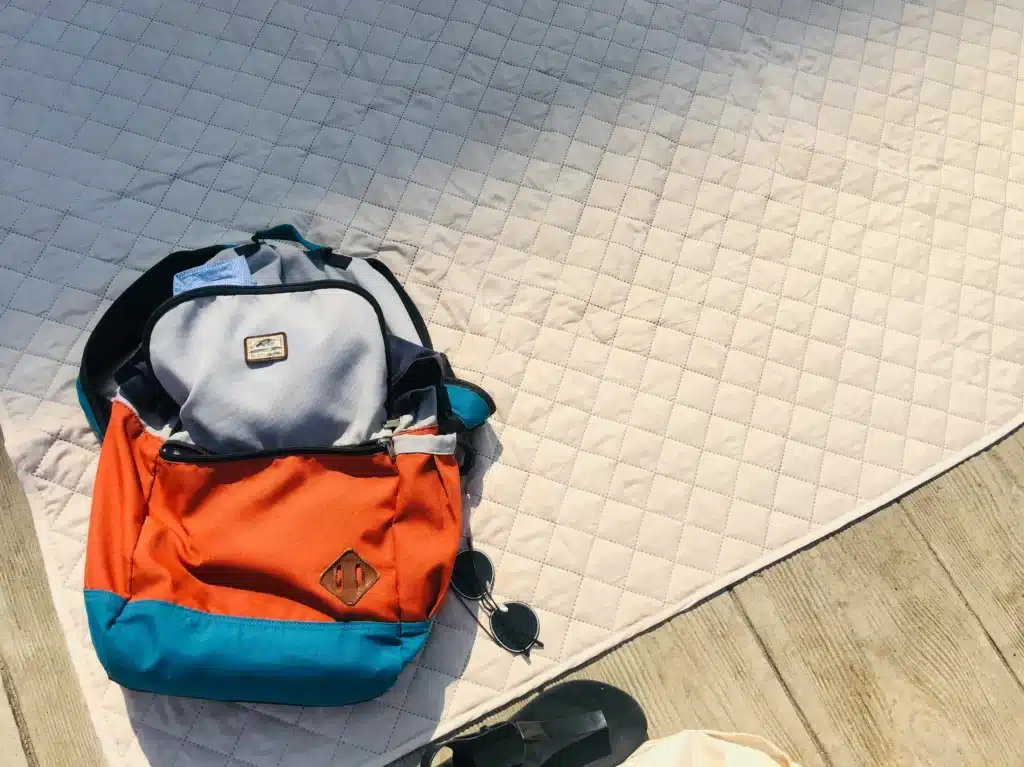
1. Gossamer Gear Polycryo Ground Sheet
What It Is:
The Gossamer Gear Polycryo is one of the lightest and most minimalist ground sheets available, designed for hikers who count every gram. Made from ultra-thin polycryo film (commonly used as window insulation), it provides basic ground protection without the bulk or weight of traditional materials.
Why It’s Popular Among Solo Hikers:
It weighs just 1.6 oz, making it ideal for ultralight backpacking setups, especially for tarp users or cowboy camping. It works well on dry, smooth ground but may tear on abrasive surfaces like rocks or twigs, and easy to replace or cut to size. Many thru-hikers consider it the best ultralight ground sheet for fair-weather treks.
Pros:
- Incredibly lightweight for minimalist hiking setups
- Inexpensive and easy to replace
- Packs down extremely small
- Can be cut to fit any sleep system
- Great option for summer and dry weather backpacking
Cons:
- Prone to tearing on rocky or abrasive terrain
- No insulation or water resistance in wet conditions
- Not reusable long-term — more of a consumable item
Best For:
Minimalist hikers, tarp campers, and fair-weather backpackers looking to shave every possible ounce from their ultralight backpacking gear.
2. Zpacks Groundsheet (Dyneema Composite)
What It Is:
The Zpacks Groundsheet is made from Dyneema Composite Fabric (DCF), a high-tech material known for its incredible strength-to-weight ratio and full waterproofing. This premium ground sheet is engineered for hikers who want maximum protection without compromising pack weight.
Why It’s Popular Among Solo Hikers:
At just 3.4 oz, it provides complete ground insulation from moisture and rough terrain. It’s extremely tough, resists abrasion well, and is completely waterproof — making it ideal for all conditions, especially where ground moisture is a concern. When comparing Dyneema vs Polycryo ground sheets, Dyneema offers superior durability and waterproofing for dedicated backpackers.
Pros:
- Fully waterproof and seam-sealed
- Extremely durable for its weight
- Doesn’t absorb water or stretch
- Rolls up tiny and is easy to deploy
- Ideal for long-distance hiking or thru-hikes
Cons:
- High price point
- Can be noisy or crinkly on hard ground
- Less forgiving if punctured (requires tape for repair)
Best For:
Thru-hikers, ultralight backpackers, and anyone who needs reliable waterproof tent footprint protection across varied terrain and weather conditions.
3. Six Moon Designs Tyvek Ground Sheet
What It Is:
This ground sheet is made from classic Tyvek home wrap — the same material used in building construction for weatherproofing. It’s tough, water-resistant, and affordable, making it a popular choice for budget-conscious hikers and section trekkers.
Why It’s Popular Among Solo Hikers:
Weighing about 5.2 oz, it’s heavier than ultralight options, but it offers excellent durability and can last for multiple seasons. It’s also slightly breathable, which helps reduce condensation buildup under your sleep system. For those seeking affordable ultralight ground sheets for thru-hiking, Tyvek offers exceptional value.
Pros:
- Very rugged and puncture-resistant
- Water-resistant and wind-blocking
- Can be washed and reused many times
- Budget-friendly and easy to source
- Makes a crinkly but nostalgic sound many hikers love
Cons:
- Bulkier and heavier than polycryo or Dyneema
- Stiff when new — needs to be softened (washed or crumpled)
- Not fully waterproof; may seep under pressure, like kneeling on wet ground
Best For:
Hikers looking for a reliable, long-lasting durable ground cloth that won’t break the bank — ideal for weekenders, section hikers, or those transitioning into ultralight gear.
4. SOL Escape Bivvy Ground Sheet
What It Is:
Originally designed as an emergency bivvy, the SOL Escape Bivvy doubles as a highly reflective, weather-resistant ground sheet. Made from metalized fabric with breathable properties, it offers light insulation and moisture protection in ultralight form, making it one of the more versatile emergency bivvy options.
Why It’s Popular Among Solo Hikers:
Weighing just 3.8 oz, it provides more than just abrasion resistance — it reflects body heat, making it a great option for colder nights or emergency shelter scenarios. Unlike crinkly mylar blankets, the material is softer, quieter, and slightly more durable but may fray with heavy use, offering valuable ground insulation for hiking in cooler conditions.
Pros:
- Reflects heat and adds thermal protection
- Water- and wind-resistant
- More durable than mylar alternatives
- Can serve as emergency shelter or bivvy liner
- Small packed size
Cons:
- Not as rugged as Dyneema or Tyvek
- Edges may fray with repeated use
- Not cut-to-fit — may need trimming for solo setups
Best For:
Cold-weather hikers, minimalist emergency preppers, and anyone wanting a dual-purpose ground sheet and backup bivvy for solo camping essentials.
5. Nemo Switchback Footprint
What It Is:
Designed as a dedicated footprint for Nemo’s Switchback series, this ground sheet is made from PU-coated polyester — a classic, durable material that offers solid protection for tent floors or under open sleep systems.
Why It’s Popular Among Solo Hikers:
At 6.5 oz, it’s the heaviest option on this list, but also one of the most rugged and reliable. It resists punctures, lays flat, and is fully waterproof — making it a dependable option for solo hikers who prioritize comfort and long-term use over strict ultralight principles. When choosing a ground sheet for solo hiking in wet terrain, this waterproof ground sheet offers maximum protection.
Pros:
- Very durable and tear-resistant
- Waterproof PU coating protects against wet ground
- Easy to clean and fold
- Compatible with many solo tents
- Offers great abrasion protection
Cons:
- Heavier and bulkier than minimalist alternatives
- Not ideal for thru-hikers or minimalist setups
- Pricier than a DIY solution with similar protection
Best For:
Solo tent users who want maximum floor protection and don’t mind a few extra ounces — especially those camping in wet or rocky environments. If you’re concerned about how to repair your tent in the field, a quality footprint like this can prevent damage in the first place.
6. LiteAF Ultralight Ground Cloth
What It Is:
The LiteAF Ground Cloth is made from Dyneema Composite Fabric (DCF), offering exceptional strength and waterproofing at an incredibly low weight. Designed specifically for ultralight hikers, it’s a premium choice for those who want top-tier performance with minimal bulk.
Why It’s Popular Among Solo Hikers:
At just 2.2 oz, it’s one of the lightest reusable ground sheets on the market. It’s strong enough to handle sharp terrain, fully waterproof, and packs down to the size of a sandwich bag. Perfect for fastpacking, thru-hiking, or minimalist overnights. Many consider this the best Dyneema ground sheet for long-distance hikers who refuse to compromise on quality.
Pros:
- Extremely lightweight without compromising durability
- 100% waterproof
- Doesn’t absorb water or stretch
- Handcrafted and built for ultralight systems
- Folds down very small for easy storage
Cons:
- Premium price point
- Can slide on slick surfaces
- Not ideal for budget-conscious hikers
Best For:
Ultralight and long-distance solo hikers who want the best gear regardless of cost — ideal for lightweight tarp camping, cowboy camping, or under ultralight tents. This pairs well with best lightweight tarps for camping shelters for a complete minimalist shelter system.
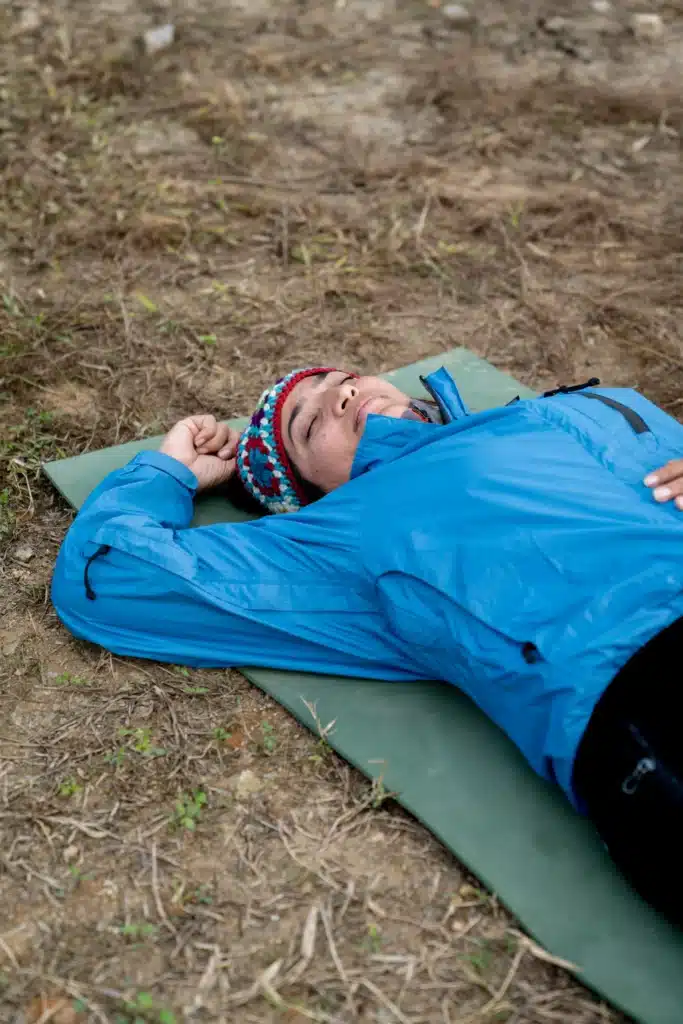
How We Selected These Ground Sheets
We tested over 20 ground sheets, focusing on weight, durability, water resistance, and value, to find the best options for solo hikers like us. To select these pads, we combined our own testing, feedback from hikers we met on the PCT, and online reviews. Each product was assessed in multiple environments, from desert terrain to alpine conditions, to ensure reliable performance for solo camping essentials.
Weight measurements were verified using a calibrated scale, and packed dimensions were taken after proper folding according to manufacturer specifications. Unlike marketing claims, our recommendations come from real-world use by ultralight backpacking enthusiasts who have trusted these products on extended trips.
Conclusion
For solo hikers, choosing the right gear is all about balancing weight and reliability – starting with a good ground sheet. A ground sheet might seem optional — until you wake up with a soaked sleeping bag or a torn tent floor. Whether you’re cowboy camping in the desert or pitching a tarp in alpine terrain, the right ultralight ground sheet gives you peace of mind without weighing you down.
From the ultra-minimalist Polycryo to high-end Dyneema models, each ground sheet in this guide serves a purpose. Your choice depends on priorities — weight, durability, price, or weather resistance. The key is to match your ground sheet to your environment and sleep system.
When learning how to pack a backpack effectively, remember that your groundsheet should be easily accessible for making camp. Choose a ground sheet that matches your hiking style, and enjoy lighter, worry-free nights on the trail.

FAQ
Q1: Do I really need a ground sheet when using a tent?
If your tent doesn’t come with a footprint, a ground sheet can significantly extend its lifespan by protecting the floor from abrasion, punctures, and moisture. It’s especially useful on rough or wet terrain. For lightweight tarp camping setups, a ground sheet becomes even more essential as your primary ground barrier.
Q2: What’s the difference between a ground sheet, footprint, and tarp?
While these terms often overlap, here’s how I distinguish them based on my hikes: a ground sheet is any protective layer, a footprint is custom-cut for your tent’s base, and a tarp can double as a shelter or gear cover.
Q3: Can I use a regular plastic tarp instead of a specialized ground sheet?
Yes — many hikers use hardware store tarps or Tyvek as DIY options. They’re bulkier and heavier but still offer solid protection, especially for budget setups. When selecting affordable ultralight ground sheets for thru-hiking, these DIY alternatives can work well with some modification.
Q4: How should I clean and maintain my ground sheet?
Shake it out after each trip. For full cleaning, rinse with water and mild soap, then air-dry fully before storing. Avoid machine washing, especially with ultralight materials like Dyneema or Polycryo. For stubborn stains, gentle hand scrubbing is recommended.
Q5: Should my ground sheet be larger or smaller than my tent floor?
Slightly smaller is better — if it sticks out, rainwater can collect and funnel under your tent. Trim DIY sheets to fit just inside the tent’s footprint. When using waterproof ground sheets for solo backpacking, proper sizing prevents water channeling.
Q6: What’s the best ultralight ground sheet for wet conditions?
For consistently wet terrain, Dyneema-based options like the Zpacks or LiteAF ground sheets offer the best waterproofing and durability. The additional cost is justified when protecting expensive down sleeping bags from ground moisture.
Q7: How long should an ultralight ground sheet last?
Lifespan varies dramatically by material and use conditions:
- Polycryo: 1-2 months (20–30 nights) of regular use
- Tyvek: 1-3 years
- Dyneema: 3+ years
- Coated nylon/polyester: 2-3 years
Q8: What are the best ultralight ground sheets for tarp camping in 2025?
For tarp camping, the Gossamer Gear Polycryo and LiteAF Ground Cloth are top picks due to their light weight and small packed size.
Q9: How to choose an ultralight ground sheet for wet terrain camping?
Prioritize waterproofing with Dyneema options like Zpacks or LiteAF, which handle moisture best.”
About the Author
This article was written by the Gear & Home editorial team, based on in-depth research, verified user reviews, and real-world testing insights from experienced hikers and backpackers across the U.S.
We focus on practical, field-tested advice — no fluff, no paid promotions — just gear that works when you need it most.

